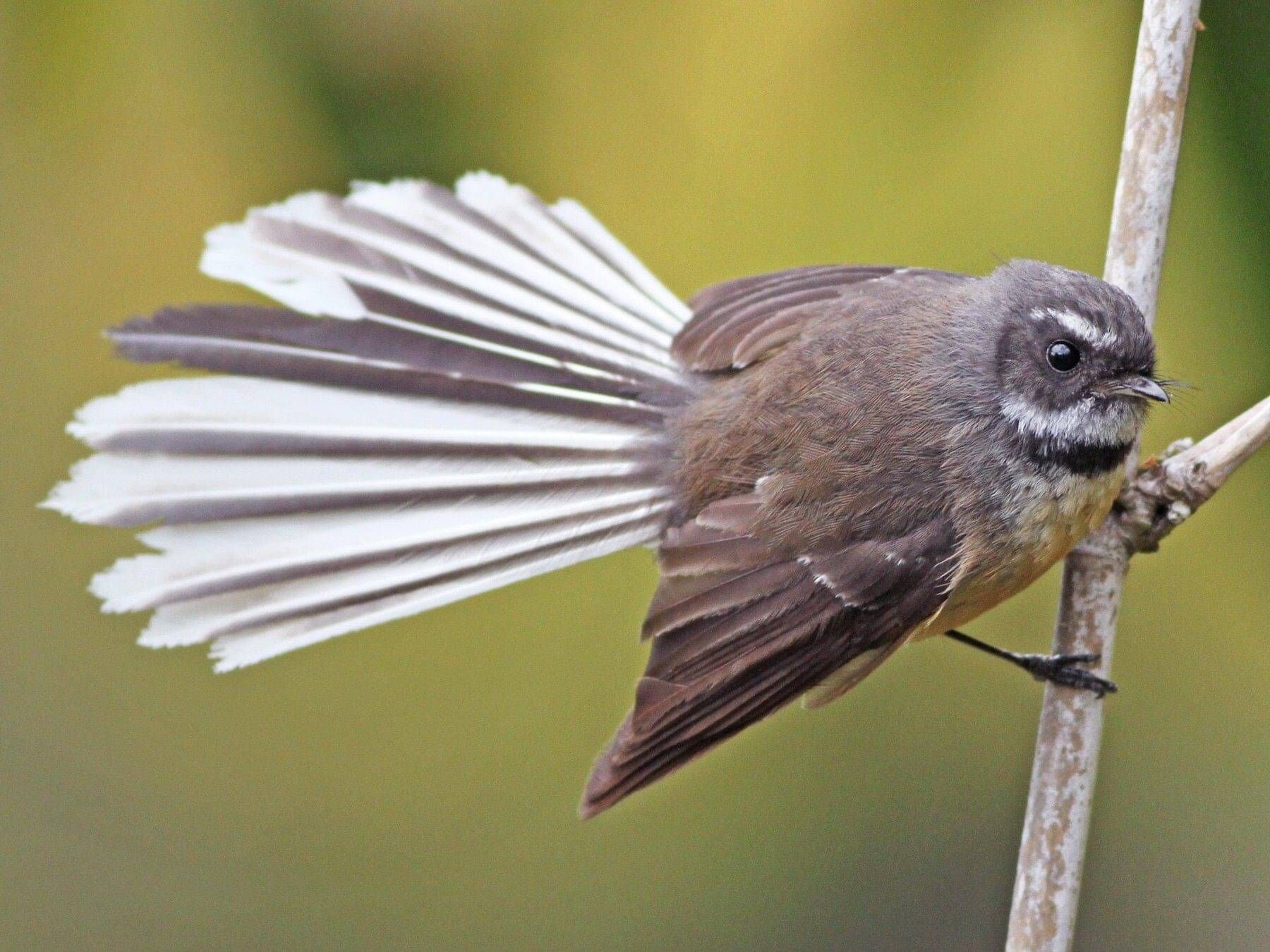Piwakawaka
New Zealand status: Endemic
Conservation status: North and South Island forms are Not Threatened, Chatham Island form is At Risk–Naturally Uncommon
Found in: Throughout New Zealand

Fantail conservation
The fantail is one of the few native bird species in New Zealand that has been able to adapt to an environment greatly altered by humans. Originally a bird of open native forests and scrub, it is now also found in exotic plantation forests, in orchards and in gardens. At times, fantails may appear far from any large stands of shrubs or trees, and it has an altitudinal range that extends from sea level to the snow line.
Cats, rats, stoats and mynas are as great an enemy to fantails as they are to other native birds. Of all the eggs and chicks fantails produce, only a few survive and grow up.
However, the secret to fantails’ relative success compared to other native birds is their ability to produce lots of young. Some chicks are therefore likely to escape predation and populations can bounce back quickly after a decline.
Its broad diet of small insects also makes the fantail resilient to environmental change, because certain insect populations increase in disturbed and deforested habitats
Piwakawaka sound
Monitoring fantail in Tongariro Forest
Rats are known to have a significant impact on forest birds. They take eggs and nestlings of small perching birds like fantails, but are also large enough to kill adults of forest birds. Monitoring the success of nests is an effective way to determine the success of predator control. If rats are controlled to a low level, more birds are expected to successfully raise their chicks.
Tongariro Forest uses fantails as an indicator of what’s happening to other birds. Rangers carefully follow fantails they hear until they find their nest, and observe how many of them successfully raise chicks, and how many of them fail. Wherever possible, the cause of failure is also recorded. This can be difficult because so little evidence is left behind.
As expected, in the years where there was predator control (in this case, in the form of aerial 1080), nesting success more than doubled. As rats began to creep up in numbers again, the nests failed more often. An interesting finding was that long-tailed cuckoos frequently raid nests, completely cleaning them out of eggs and chicks. The impact of cuckoos as a natural predator had not previously been well understood.
With thanks to the Department Of Conservation as the source for this information and images